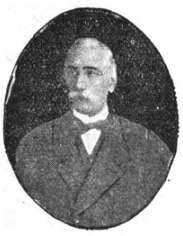Sanasarian College
The Sanassarian College (Armenian: Սանասարեան վարժարան) or Sanasarian College[1] was an Armenian language higher education institution in the city of Erzurum (called Karin by Armenians), Ottoman Empire founded in 1881[2] by an Armenian merchant, Mkrtich Sanasarian.[3]
 | |
| Type | College |
|---|---|
| Established | 1881 |
| Students | 120 |
| Undergraduates | pre-university students; regular, technical, apprenticeship |
| Postgraduates | not available |
| Location | , , |
Description

It was a school of high grade which consisted of teachers who were mostly educated in Germany. The college had a nine-year course, with a high grade education that was taught.[4] The school lasted until the Armenian Genocide, when most of the teachers were killed and the building was ruined. Sanasarian college was a foremost institution for Armenian culture and education in the eastern provinces during the decades before World War I.[5]

An English explorer, writer, and a natural historian Isabella Bird's (1831-1904) described the college as:
One of the most interesting sights in Erzerum is the Sanassarian College, founded and handsomely endowed by the liberality of an Armenian merchant. The fine buildings are of the best construction, and are admirably suited for educational purposes, and the equipments are of the latest and most complete description. The education and the moral and intellectual training are of a very high type, and the personal influence of the three directors, who were educated in Germany and England, altogether "makes for righteousness." The graduation course is nine years. The students, numbering 120, wear a uniform, and there is no distinction of class among them. They are, almost without exception, manly, earnest, and studious, and are full of enthusiasm and esprit de corps. Much may be hoped for in the future from the admirable moral training and thorough education given in this college, which is one of the few bright spots in Armenia.[6]
After the Armenian Genocide, and when the property was abandoned, the Sanasarian College was chosen as the location for the Erzurum Congress.[7][8]
Legal status
The Armenian Patriarchate of Istanbul appealed to the court in Ankara for the return of Sanasarian College.[9] The properties owned by the Sanasarian college include nine plots of land in Erzurum, a garden house and vast farmland in the village of Aghveren, two plots in the village of Gez, and a large commercial property known as Sanasarian Han in the Sirkeci district of Istanbul.[9] The court proceedings are still pending.[9]
Notable graduates
- Karekin Pastermadjian
- Krikor Balakian
- Vartkes Serengülian
- Vartan Mahokian
See also
- Nersisyan School
- Education in the Ottoman Empire
References
- A History of Armenia - Page 372 by Vahan M. Kurkjian
- A few facts about Turkey under the reign of Abdul Hamid II. By An American observer, p.54
- The Heritage of Armenian Literature: From the eighteenth century to modern times By Agop Jack Hacikyan, Gabriel Basmajian, Edward S. Franchuk, p.337
- The Missionary herald at home and abroad: Volume 86 - Page 362 - American Board of Commissioners for Foreign Missions
- The Republic of Armenia: The first year, 1918-1919 By Richard G. Hovannisian -p.436
- Bird, Isabella L. Journeys in Persia and Kurdistan :including a summer in the upper Karun region and a visit to the Nestorian Rayahs. New York : G.P. Putnam's Sons ; London : J. Murray, 1891., p.385
- Hovannisian. Republic of Armenia, pp. 435-436.
- Suny, Ronald (2015). "They Can Live in the Desert but Nowhere Else": A History of the Armenian Genocide. Princeton University Press. p. 338. ISBN 1400865581. - Profile at Google Books
- "Patrikhane Sanasaryan davasını Anadolu sathına yaydı" (in Turkish). Archived from the original on 21 April 2013. Retrieved 21 December 2012.